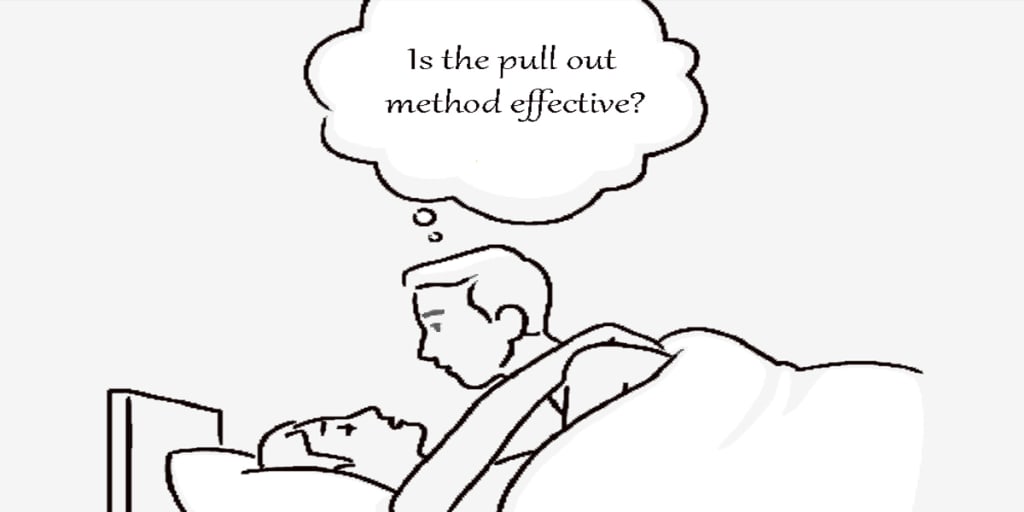Is the Pull Out Method Effective?
Does It Actually Prevent Pregnancy?

If you're considering birth control methods, you may be toying with the idea of the pull-out or withdrawal method. People employ this method by ensuring that the penis is withdrawn from the vagina prior to orgasm and ejaculation. The cum must be away from the vulva entirely.
Planned Parenthood estimates that using this method, approximately one in five people will get pregnant. Pulling out is not totally ineffective, but it also still is not foolproof. The hardest part about the withdrawal method is that people are not always able to judge the right time. Accidents can happen. Anyone considering using this method should consider a secondary method of birth control as well.
How Does It Work?
The person who is pulling out requires a lot of self-control. They need to be able to know when they are about to orgasm and hold back that moment until after the penis is away from the vulva. This moment can be hard to determine if someone isn't used to it. Masturbation can help people learn what it feels like just before they cum.
If there are any concerns or issues around premature ejaculation, this may make this method less effective as well. It can be hard for someone who starts to cum before they realize they're ready to be able to pull out in time.
Trust needs to be between both partners as well. The partner with the vagina must trust that their partner will withdraw in time.
What About Pre-Cum? Is There Sperm in It?
A lot of things are still unknown about pre-cum. Some smaller studies have found no sperm in the pre-cum. More recent studies have found that approximately one-third of the participants have sperm present in their pre-cum.
The potential for sperm found in pre-cum can definitely impact the effectiveness of this method of birth control. It would also be impossible to know if a person would have sperm in their pre-cum without laboratory testing. All of this can make using this method as the only form of birth control considerably more risky!
Does the Pull Out Method Prevent STIs?
No, the pull-out method doesn't prevent the transmission of sexually transmitted infections. If one person has an STI and no barriers are used, there is nothing standing in the way of that infection being transferred to the partner.
Some STIs can be contracted through skin-to-skin contact such as HPV or genital herpes. Other STIs, such as gonorrhea, can be carried by pre-cum and the early transfer of fluids.
You and your partner should know your STI status if you plan on using any birth control methods that don't incorporate some sort of barrier.
What Makes the Pull Out Method Great?
One of the great things about this method is that it's free and is always an option. If you live in an area where birth control methods can be more difficult to come by, this is always an option. It's better than no method of birth control at all.
The pull out method has no side effects. Unlike some other forms of birth control, such as hormonal, this method doesn't subject you to any unwanted side effects.
It can also be paired with other forms of birth control to further reduce the risks of pregnancy. There is nothing stopping you from adding this method as another measure to keep the risks of an unwanted pregnancy low.
Using the Pull Out Method Is a Personal Choice
The pull out method is a recognized form of birth control, even though it tends to be less effective than other forms of birth control. What you and your partner choose should be dependent on what you feel will work best for you both. You should be the person to decide your own comfort level for what is best. Make sure that you have all the facts to make an informed decision.
Enjoyed This Article?
Check out the other great articles, games, and more on my website.
About the Creator
Teela Hudak
Teela is a Vancouver-based Sex Educator & Relationship Expert. Learn more at: https://exploresextalk.com/






Comments
There are no comments for this story
Be the first to respond and start the conversation.